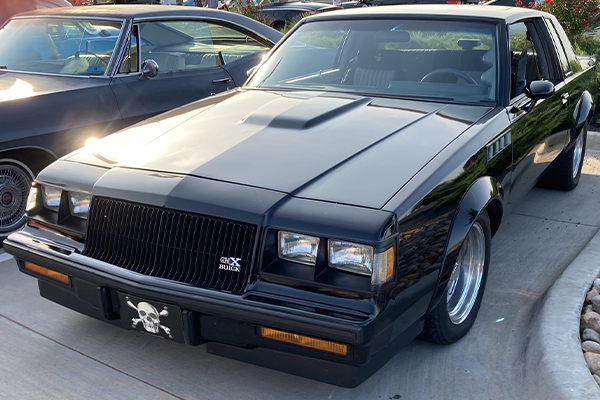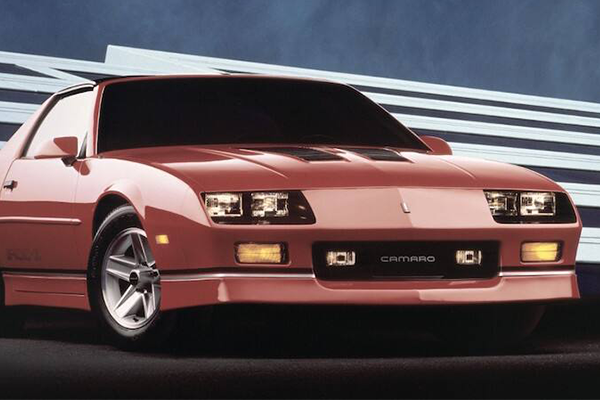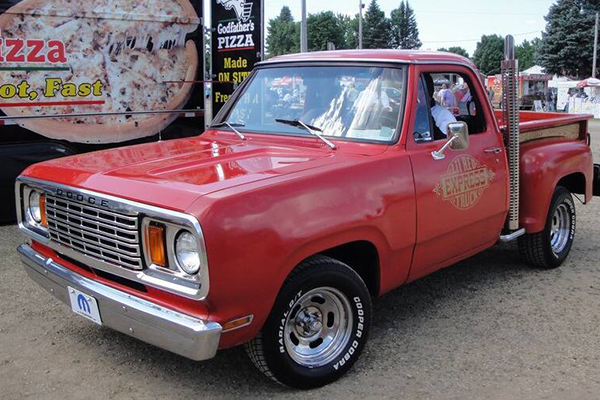From timeless icons to everyday essentials, Crucial Cars examines the vehicles we can’t live without. For this installment, we put the spotlight on a sports car with a strong, well-deserved fan base – the Mazda RX-7
 Classic Mazda RX-7 1970-1979
Classic Mazda RX-7 1970-1979
Back in the fall of 1978, Mazda put out a rather bold print ad in the car buff magazines. It pictured Mazda’s new, rotary-engined sports car, the 1979 RX-7 sitting proudly in front of sports car icons that had debuted before: the 1947 MG TC; The 1953 Chevrolet Corvette; and the 1970 Datsun 240-Z. “This year, it’s the Mazda RX-7.” A brash statement, certainly, and one that time would reveal to be more than justified. 1979 MazdaRX7 ad
1979 MazdaRX7 ad
Those car mags -- Road and Track, Motor Trend, and Car and Driver -- had high hopes for the car. Expectations that were met, if not exceeded, once they laid their collective driving gloves on Mazda’s light, sleek, and well-rounded sports car. Those basic tenets of light weight, a free-revving rotary engine, and an athletic chassis carried the RX-7 through essentially, four generations, as the last version was dubbed the RX-8. What has also carried on is the unabashed enthusiasm the RX-7 fans have for this very unique sports car.
Getting it right the first time
A sleek, pointy-nosed silhouette with flip-up headlights was what one first noticed upon seeing Mazda’s new 1979 sports car. Yet under the handsome form was the big news. For there lay a powerplant and suspension that could put an ear-to-ear grin on the Grinch, were he a road test editor. And it started at under $6,500, though by the end of that first model year the still crazy bargain price had crept up to around $7,000.
It may have made just 100 horsepower, but the RX-7’s tiny 1.2-liter rotary engine, when looked upon as power per liter, was a monster. Fuel mileage was also more like a larger engine, with 17 to 19 mpg being about average. More notably, it was a delight to drive thanks to its ultra-smooth, eagerly revving nature that, coupled with the car’s light weight of just 2,400 pounds, provided sprightly for the day acceleration. Though 0-to-60 in about 9.3 seconds and a 17 second quarter mile time aren’t exactly scorching asphalt, consider that a 1979 Camaro Z28, with its 5.7-liter V8, took about 8 seconds and 16 seconds, respectively, for the same sprints.
But the RX-7 was designed more for unwinding curvy roads than juvenile stop light drags. Yes, it may have been somewhat unsophisticated with recirculating ball steering (rather than rack and pinion) and a solid rear axle (rather than independent suspension), but no matter. With its small, light engine set behind the front axle line, the RX-7 sported ideal 50:50 front to rear weight balance, and with the car’s low center of gravity, relatively quick steering and firm suspension provided tons of fun on one’s favorite deserted stretch of twisting blacktop. 1981 Mazda RX-7 S
1981 Mazda RX-7 S
Initially available in just base S (4-speed manual, steel wheels) and up-level GS (5-speed stick, fancier interior) trim levels, the first RX-7 lasted until 1985, by which time one could also choose plush GSL and top of the line GSL-SE versions. The latter in particular, available only in ’84 and ’85, is the one that first-gen RX-7 fans lust for, as it sports a larger (1.3-liters versus 1.2), more powerful, 135-horsepower engine, four-wheel disc brakes (versus front disc/rear drum) and larger wheels (14-inch versus 13-inch) along with all the luxury features of the GSL. A GSL-SE could dash to 60 mph in just about 8 seconds and fly through the quarter mile in around 16 flat.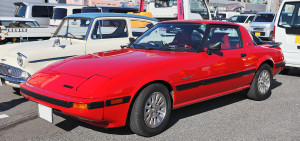 1984 Mazda RX-7 GSL-SE
1984 Mazda RX-7 GSL-SE
Growing upmarket
For 1986, Mazda brought out the second-generation RX-7. A ground-up redesign seemingly inspired by the Porsche 944, the new RX-7’s styling featured flared out fenders that closely resembled those of the German sports car. The rear, wrap-around glass hatch was now one piece, rather than three as before, lending a cleaner look, as did the smoothly integrated bumpers. Inside, the design and materials were both improved with thicker, well-shaped seats and large instruments and controls all within a wrap-around cockpit theme.
Under the sleek hood of all RX-7s, be they the base model or fancy GXL, was a 1.3-liter rotary with 146 horsepower, a sizeable boost over the previous base engine and still more than the previous, alphabet-soup RX-7 GSL-SE. The steering was now rack and pinion, all models had four-wheel disc brakes as well as a five-speed stick standard (automatic still optional) and the suspension was more refined, being all independent.
Yet despite the more generous features list and the more sophisticated underpinnings, the new RX-7’s curb weight only increased by about 150-200 pounds (depending on trim level). As such, the new RX-7’s performance was spirited, with the old 0-to-60 and quarter mile contests being done in around 8.5- and 16.5-seconds, respectively. As before, though, this car’s real appeal lay in the way in could confidently dispatch a series of S curves and switchbacks. Drivers in the know kept the rotary humming above 5,000 as they got their kicks slicing through and powering out of the turns.
More power is always good, so for 1987, the RX-7 Turbo debuted. Force-feeding the 1.3-liter rotary pumped output up to 182 horses, good enough for 6.5-second 0-to-60 and 15.0-second quarter-mile times, very impressive for the era. The Turbo also featured larger (16-inch) wheels and tires, firmer suspension tuning, and plenty of luxury features including full power accessories, a sunroof and an upgraded audio system complete with cassette deck and graphic equalizer. It was the ‘80s, after all.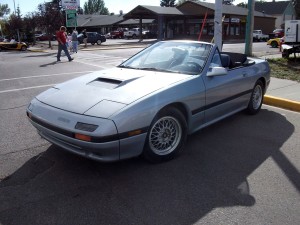 1988 Mazda RX-7 Convertible (with Turbo hood)
1988 Mazda RX-7 Convertible (with Turbo hood)
For 1988, a convertible joined the lineup. Sadly, the Turbo was not offered in drop-top form but could be had in a special 10th anniversary RX-7, the latter celebrating 10 years of RX-7 production via unique color scheme with white paint, white wheels, and white bodyside moldings.
A mild, mid-cycle update for 1989 brought more power for the non-turbo RX-7s, now up to 160 hp, as well as more thrust for the Turbo, now rated at a full 200 hp. The increased muscle shaved a few tenths off the acceleration times, while color-keyed bodyside moldings and new wheels dressed things up a bit. That year also saw the GTU version debut, essentially a base model with some performance enhancements such as firmer suspension and larger, alloy wheels fitted with performance tires. 1990 Mazda RX-7 (with Turbo hood and custom wheels)
1990 Mazda RX-7 (with Turbo hood and custom wheels)
The next three years, 1990 through 1992, saw little change for Mazda’s exciting two-seater, apart from the GTUs version debuting. Essentially a Turbo model minus the turbo engine, it benefitted from the top dog RX-7’s top shelf underpinnings, such as the upgraded brakes and suspension components.
After seven model years, the second generation RX-7 had run its course. Those wondering how it could be topped would be stunned with what followed for 1993.
See part 2 for our deep-dive into the later RX-7 generations.
